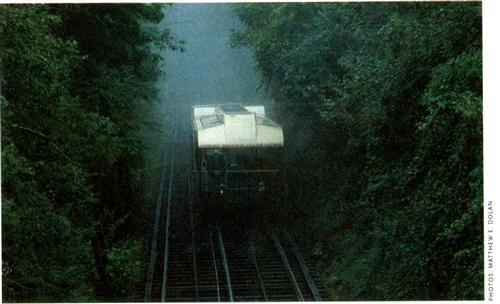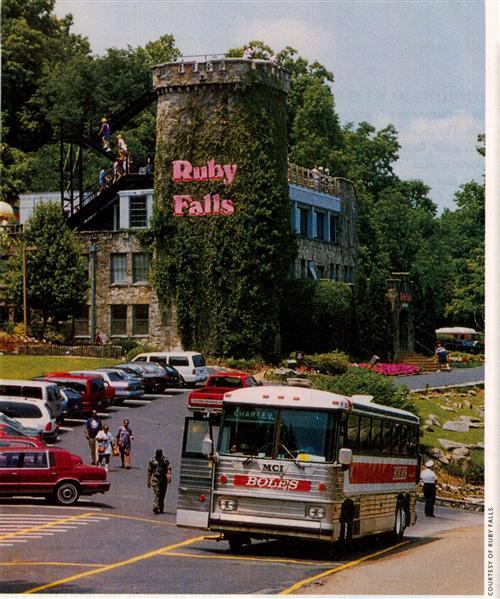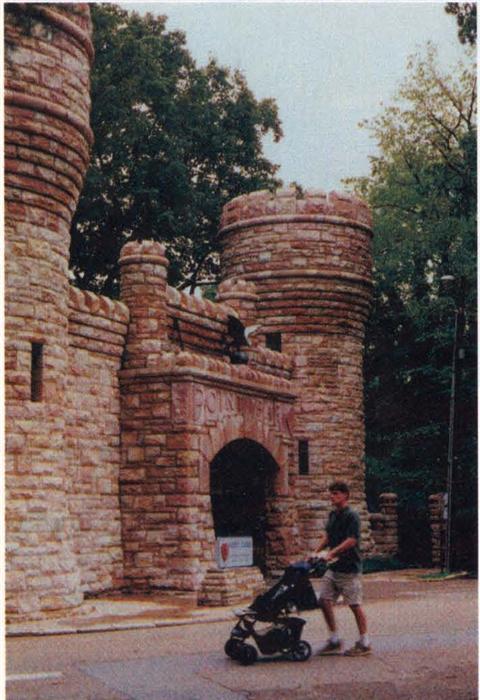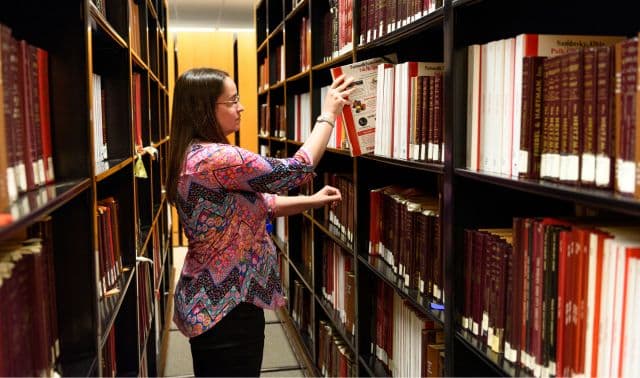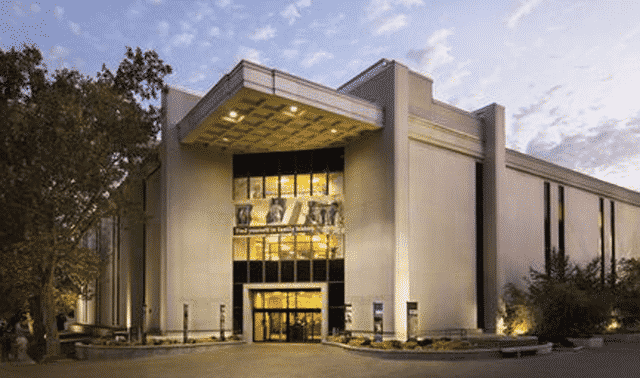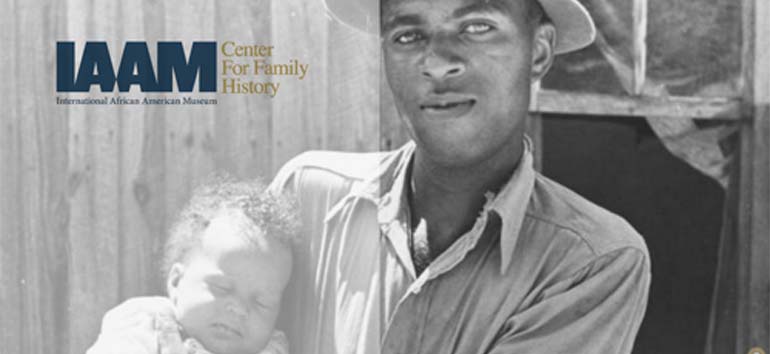Sign up for the Family Tree Newsletter Plus, you’ll receive our 10 Essential Genealogy Research Forms PDF as a special thank you!
Get Your Free Genealogy Forms
"*" indicates required fields
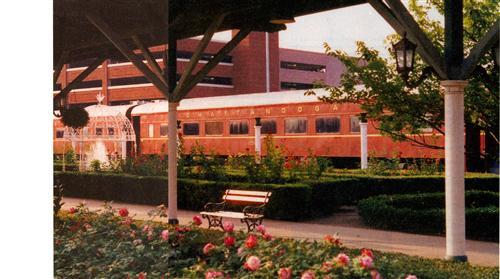
Chattanooga’s railroad age actually began almost a century before Glenn Miller popularized the city’s namesake song. A train owned by the Western & Atlantic line was the first to chug into Chattanooga, in 1849. Its arrival ushered in the growing commercial and passenger traffic that would turn this young town into the “Gateway to the South” — so called because nearly all trains bound for Southern states passed through Chattanooga. In 1880, the city welcomed the first passenger train to provide nonstop service to the area. A reporter dubbed it the “Chattanooga choo-choo,” and the nickname stuck.
The depot that inspired the jazz song opened in 1909. Terminal Station, built by Southern Railway at the south end of town, quickly became a hub for passenger traffic. Its architecture — especially the dramatic 85-foot dome over the concourse — reflected the Victorian elegance associated with railroading’s golden age. At its height, Terminal Station hosted 50 passenger trains daily; three US presidents (Woodrow Wilson, Theodore Roosevelt and Franklin Roosevelt) crossed its platforms. The depot — and city — was still a hotbed of train travel when lyricist Mack Gordon paired the choo-choo nickname with Harold Warren’s melody. The Glenn Miller Orchestra’s 1942 rendition of “Chattanooga Choo Choo” made the Tennessee town famous.
Today, Terminal Station is a logical first stop on your ride into Chattanooga history. After the station shut down its tracks in 1970, developers saved it from the wrecking ball, converting the depot into a hotel that celebrates Tennessee’s trains of yore: the Chattanooga Choo Choo Holiday Inn (1400 Market St., 800-TRACK-29, <www.choochoo.com>), a full-blown entertainment complex with shopping, antique-trolley rides, dining and more. The station’s domed concourse serves as the hotel lobby; the old platforms enclose a rose garden flanked by tourist shops and restaurants, including The Station House, where “singing servers” perform the classic tune. A wood-burning train engine, similar to the 1880 original, is on display in the platform area. This choo-choo has been retired, but you can still catch a ride on a 1924 New Orleans trolley, which makes brief trips through the complex. You also can see a miniature depiction of railroads in Chattanooga and environs at the on-site Model Railroad Museum. The model boasts 3,000 feet of track, 120 locomotives, more than 1,000 cars and four stations.
True train buffs will want to spend the night in one of more than 40 restored sleeper cars, decked out with Victorian decor and modern-day comforts (no communal washrooms!). At $150 a night, they cost only marginally more than the $129 standard rooms — but you’ll need to make reservations well in advance. In addition to the Choo Choo’s attractions and amenities, it’s in an excellent location: across the street from the southern terminus of Chattanooga’s free Electric Shuttle (423-629-1473, <www.carta-bus.org>). These buses provide convenient access to attractions throughout downtown; they run every five minutes from 6 a.m. to 9:30 p.m. weekdays, 9 a.m. to 9:30 p.m. Saturday and 9 a.m. to 8:30 p.m. Sunday.
Downtown express
The Choo Choo’s successful restoration has spurred other preservation projects, including the Warehouse Row shopping area (offices at 1110 Market St., 423-267-1111, <www.primeretail.com>). It’s just a few blocks north of the Choo Choo on Market Street. Eight formerly abandoned railway warehouses now house a popular outlet mall with more than two dozen stores. Soak up railroad history while you hunt for bargains on Polo, Coach, Izod and other designer merchandise.
If you have African-American roots — or you’re a blues fan — detour from the shuttle route to the Chattanooga African-American Museum (CAAM) and Bessie Smith Hall (200 E. Martin Luther King Jr. Blvd., 423-266-8658 and 423-757-0020, <www.caamhistory.com>). Before Glenn Miller made Chattanooga a household word, Smith’s soulful singing put her hometown on the map of the American jazz scene. During the 1920s and ’30s, she became one of the country’s most successful African-American musicians: Her 1923 recording of; “Down Hearted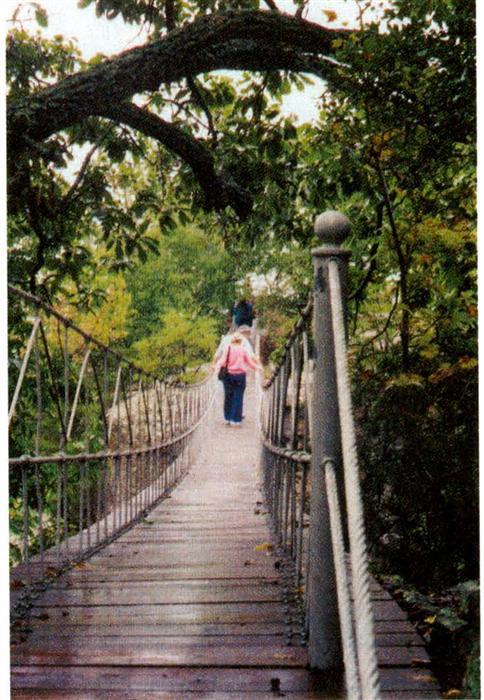
The African-American museum recreates elements of African heritage and traces black history in the region. Your tour starts in “Africa” — you’ll see a traditional hut, an urban dwelling and authentic artifacts surrounded by a mural depicting how the surrounding landscape might look. The remaining exhibits trace African-American life in Chattanooga, exploring blacks’ contributions to arts, entertainment, sports, religion, industry, the military and civil rights. The museum sits several blocks northeast of Warehouse Row. It’s open 10 a.m to 5 p.m. weekdays and noon to 4 p.m Saturday; admission is $5 for adults, $3 for students and seniors, and $2 for kids 6 to 12.
You’ll get a broader look at local history at the Chattanooga Regional History Museum (400 Chestnut St., 423-265-3247, <www.chattanoogahistory.com>). This museum occupies a renovated 1910 schoolhouse toward the north end of downtown; it’s a block west of Broad Street at Fourth and Chestnut streets. (Note that it will move to a new location next winter.)
When you arrive, orient yourself to Chattanooga’s story — from prehistory to the present — by watching the museum’s award-winning video, “Marks on the Land.” You’ll follow Chattanooga from its origins as a Cherokee trading post, Ross’ Landing, through Indian removal on the Trail of Tears, railroad growth, Civil War battles and more-modern developments.
Then, dive into displays that give you a firsthand look at the region’s evolution. You’ll see the impact of local industries and companies, such as Coca-Cola (which opened its first bottling plant here in 1899), Olan Mills and Moon Pies. Tour the museum’s authentic 1930s kitchen to see what happened when America switched on a new, electric-powered lifestyle — thanks to the Tennessee Valley Authority (TVA, which operates today from the south end of downtown, across Market Street from Warehouse Row). The museum also features changing exhibits; you can catch Take a Ride on the Dixie Highway through Aug. 8. Admission costs $4 for adults, $3.50 for seniors and $3 for children ages 5 to 18. Hours are 10 a.m. to 4:30 p.m. weekdays and 11 a.m. to 4:30 p.m. weekends. Plan to spend several hours here.
Be sure to make a pit stop next door at a novel museum celebrating a more-recent chapter of local transportation history: the International Towing and Recovery Hall of Fame and Museum (401 Broad St., 423-267-3132, <www.internationaltowingmuseum.org>). You’ll recognize it instantly from the tow-truck park bench out front. The towing industry was born in Chattanooga, and although the city’s railroading heritage has brought it more notoriety, this offbeat museum has captured tourists’ interest just about as well — 13,000 visit annually. See antique “wreckers,” including a 1913 Locomobile truck with a 1919 Holmes 485 wrecker, the oldest model on display. It was built from the original patent filed by inventor Ernest W. Holmes, and takes its name from the wrecker’s $485 price tag. You can visit from 10 a.m. to 4:30 p.m. weekdays and 11 a.m. to 5 p.m. weekends; admission is $4 for adults and $3 for seniors and kids ages 5 to 18.
Several more attractions are nearby in the riverfront area around Broad Street’s north end (also the northern terminus of the Electric Shuttle). The Tennessee Aquarium (1 Broad St., 423-265-0695, <www.tnaqua.com>) boasts the world’s biggest freshwater aquarium. Its glass-pyramid roof, which juts out from the city skyline, makes the aquarium a downtown landmark. Kids will love the hands-on exhibits at the Creative Discovery Museum (321 Chestnut St., 423-756-2738, <www.cdmfun.org>). You also may want to catch a 3-D flick at the IMAX Theater (201 Chestnut St., 423-266-IMAX) or take in a baseball game at BellSouth Park, home of the Chattanooga Lookouts <www.lookouts.com>.
The river route
Farther east, history meets fine art in the Bluffview Art District. A hot spot on the Chattanooga cultural scene, this area offers a variety of museums, restaurants and inns in historic buildings where Chattanooga’s wealthiest families once resided. Art enthusiasts won’t want to miss the Hunter Museum of American Art (10 Bluff View, 423-267-0968, <www.huntermuseum.org>). It showcases works by Andrew Wyeth, Mary Cassatt, Winslow Homer and others, in a mansion formerly inhabited by Coca-Cola magnate George Thomas Hunter. The Houston Museum of Decorative Arts (201 High St., 423-267-7176, <www.chattanooga.net/houston>) features a huge antique-glass collection. Bluffview is yet another example of Chattanooga’s successful urban renewal, tying its future to the past. It’s within walking distance of the aquarium.
To see more of the city’s riverfront renaissance, head across the Tennessee River to the North Shore area via the Walnut Street Bridge, touted as the world’s longest pedestrian bridge. Of course, pedestrians aren’t the only ones who frequent the bridge — it’s a popular path for cyclists, rollerbladers and joggers, too. Built in 1891, the bridge spent much of its life as automobile thoroughfare. It narrowly escaped demolition in 1978, when citizens got it listed on the National Register of Historic Places. Today, boardwalk has replaced asphalt, and Walnut Street Bridge offers terrific views of the river and the “cliffs” of the Bluffview Art District. (You can read about the environmentally-friendly techniques used to preserve the bridge online at <www.sustainable.doe.gov/success/walnut_street.shtml>.)
At the bridge’s opposite end, you’ll enter Coolidge Park. A popular place for picnics, parties and summertime splashing (in an interactive fountain), the park is also home to Coolidge Park Carousel. This century-old, three-row Denzel carousel has been carefully restored and outfitted with 52 wooden animals — including a tiger, a frog, a fish, a dinosaur and, of course, good old-fashioned horses — hand-carved by students of Horsin’ Around, the country’s only carousel carving school (423-332-1111, <www.carouselcarvingschool.com>). As you whirl around to the organ music, you’ll forget that you’re in the 21st century — and maybe even that you’re a grown-up.
Meal tickets
• The 212 Market Restaurant (212 Market St., 423-265-1212, <www.212market.com>), located across from the aquarium, boasts the city’s best wine list and a gourmet menu.
• The Bluffview Art District’s Back Inn Cafe (412 E. Second St., 423-265-5033) offers fare to match its artsy environment, including sweet-potato and pear vichyssoise and pumpkin ravioli. Reservations recommended.
• Big River Grille and Brewing Works (222 Broad St., 423-267-2739), also near the aquarium, opened in 1993 as Chattanooga’s first brewpub. Enjoy ales and lagers made on the premises, along with American cuisine.
• The Chattanoogan resort hotel (1201 S. Broad St., 423-424-3720, <www.chattanooganhotel.com>) houses three popular restaurants: Broad St. Grille, whose open kitchen lets you watch the chefs in action; The Foundry, an upscale bistro; and Strouds, serving espresso, pastries and sandwiches.
• Take a lunch or dinner cruise on the Southern Belle(201 Riverfront Parkway, Pier 2, 423-266-4488, <www.chattanoogariverboat.com>) and feast on the sights along the Tennessee River.
• Tony’s Pasta Shop and Trattoria (212 High St., 423-265-5033) in the Bluffview area touts gourmet Italian food at moderate prices.
Sleeper hits
These historic inns and B&Bs provide comfy quarters for your stay:
• The BluffView Inn (423-265-5033, <www.virtualcities.com/ons/tn/x/tnx36010.htm>; $100 to $250 a night) features three historic dwellings: Thompson House (212 High St.), a 1908 Victorian that has four guest rooms and two suites; C.G. Martin House (412 E. Second St.), a 1927 Colonial Revival home featuring three guest rooms; and Maclellan House (211 E. Second St.), a 19th-century Tudor with six guest rooms and a penthouse suite.
• Adjacent to Rock City Gardens, the 1927 Chanticleer Inn Bed & Breakfast (1300 Mockingbird Lane, Lookout Mountain, GA, 866-999-1015, <www.stayatchanticleer.com>; $89 to $174 a night) features 14 English-cottage-style guest rooms.
• The Mayor’s Mansion Inn (801 Vine St., 423-265-5000, <www.innjoy.com>; $150 to $275 a night) is in the 1889 home of former Chattanooga Mayor Edmond G. Watkins. Its 11 guest rooms blend French Provincial decor with the inn’s Victorian architecture.
For more options, contact the Chattanooga Area Convention & Visitors Bureau at (800) 322-3344 or <www.chattanoogafun.com>.
Mountain stops
More history awaits you at Lookout Mountain. The mountain straddles three states — Tennessee, Georgia and Alabama — with its slopes gradually giving way to steep, rocky cliffs that culminate in a plateau rather than a peak. Chattanooga sits at the mountain’s northern base; the city actually took its name from the Cherokee word describing the mountain.
You’ll want to scale Lookout Mountain the old-fashioned way — but that doesn’t mean donning your hiking gear. Board the Lookout Mountain Incline Railway (lower station at 3917 St. Elmo Ave., 423-821-4224, <www.carta-bus.com>), and chug to the summit on a trolley-style car, as tourists have done since 1895. As you ascend, you’ll see why this National Historic Site has long been such a hit with visitors (aside from the physical reprieve): stunning views of the city and the surrounding mountains and valleys. The track rises to a 72 percent grade near the top, making this the steepest known passenger railway operating today. The Incline Railway makes three to four trips each hour. During summer, the trains run from 8:30 a.m. to 9:30 p.m. Adults can buy round-trip tickets for $9, and kids 3 to 12 pay $4.50.
Atop Lookout Mountain, you’ll find Ruby Falls (1720 S. Scenic Highway, Lookout Mountain, TN, 423-821-2544, <www.rubyfalls.com>). This 145-foot waterfall sits inside the Lookout Mountain Caverns, which have been attracting visitors for hundreds of years: American Indians, Civil War troops and Andrew Jackson are among those who traversed the mountain’s lower cave. While excavating an elevator shaft to that cave 75 years ago, Leo Lambert discovered a small opening to another cave — further exploration led him to Ruby Falls, which he named after his wife.
If you take a guided tour of the caverns, you’ll see stalagmites and stalactites, columns and drapes, plus other interesting rock and mineral formations. (No need to tote a reference book: Your guide will explain the finer points of the cave’s geology.) After admiring the falls, you can take in more panoramic views atop Lookout Mountain Tower. Admission to Ruby Falls costs $11.50 for adults and $5.50 for ages 3 to 12; it’s open year-round from 8 a.m. to 8 p.m.
Even before reaching Lookout Mountain, you may already have spotted one of Rock City Gardens’ (1400 Patten Road, Lookout Mountain, GA, 706-820-2531, <www.seerockcity.com>) famous barn ads: “See 7 States from Rock City, World’s 8th Wonder.” These 14-acre gardens atop the mountain encompass caves, cliffs, waterfalls, 200 million-year-old rock formations and 400-plus species of plants. In the 1920s, while Garnet and Frieda Carter were developing a residential neighborhood on the surrounding 700 acres, Frieda turned this expanse — their personal estate — into a rock garden. The Carters opened the garden as a tourist attraction in 1932, and Garnet commissioned the legendary barn paintings a few years later. Now you can walk the Enchanted Trail that Frieda marked, navigating landmarks such as Needle’s Eye, Lover’s Leap, the Swing-A-Long Bridge and Fat Man’s Squeeze. Oh, and the view of seven states? You can catch that (on a clear day) at Flag Court.
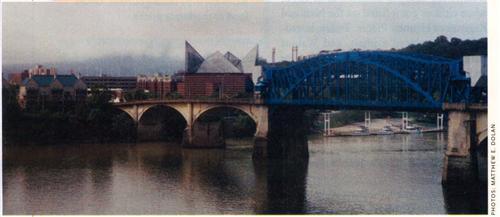
Civil War stations
Lookout Mountain is probably best-known for the Civil War history that played out here. Chattanooga became a strategically crucial site in the conflict — as the South’s major rail center, it was a lifeline for weapons and supplies.
The pivotal Chattanooga campaign unfolded in late 1863. After Gen. Braxton Bragg’s Confederate soldiers defeated Maj. Gen. William S. Rosecrans’ Union forces at the Battle of Chickamauga (in nearby Georgia) Sept. 19, the federal troops retreated to Chattanooga. The Confederates occupied Lookout Mountain and Missionary Ridge, successfully blocking the river, roads and rail lines. No Union supplies could enter the city.
Washington immediately sent reinforcements: units led by Maj. Gens. Joseph Hooker and William Tecumseh Sherman, under the overall command of Ulysses S. Grant. Hooker and Grant arrived a month later, and surprised Bragg’s men at Brown’s Ferry Oct. 28. The tide had begun to turn: The Union’s victory allowed it to open the “Cracker Line” supply route. When Sherman’s troops arrived in mid-November, Grant plotted another siege. On Nov. 24, a thick fog enveloped Lookout Mountain. Grant deployed Hooker’s forces, who pushed out the Confederates in the “Battle Above the Clouds.” The Southern soldiers reassembled at Missionary Ridge, where Union troops — without waiting for orders — charged to victory a day later. The Confederates’ defeat paved the way for Sherman’s destructive “March to the Sea.”
You can see a “re-enactment” of this Civil War campaign at Battles for Chattanooga (1110 E. Brow Road, Lookout Mountain, TN, 423-821-2812, <www.battlesforchattanooga.com>). This museum’s centerpiece is an electronic map that gives a play-by-play of the battles with lights, sound effects and miniature soldiers. It’s a great introduction to exploring the actual battlegrounds. Battles for Chattanooga operates daily; hours vary by season. Admission is $5.95 for adults and $3.95 for kids 3 to 12.
Once you’ve been briefed on the battles, step directly into Civil War history: The entrance to Point Park — site of the Battle of Lookout Mountain — is next door. It’s part of the Chickamauga & Chattanooga National Military Park (706-866-9241, <www.nps.gov/chch>). When you walk through the entrance gate, you’ll come face-to-face with two 12-pounder Napoleon cannons that mark an original Confederate artillery position. A self-guided walking tour will lead you to the park’s most important sites, including Cravens House, used as a Confederate headquarters, and the New York Peace Monument, which depicts a Union and a Confederate soldier shaking hands.
Chickamauga Battlefield is a short drive from Lookout Mountain. This section of the country’s first military park was the site of the Civil War’s bloodiest battle: 16,000 Union soldiers and 18,000 Confederates perished in a single day of combat. You’ll learn more about the fight for Chickamauga in the visitor center. Outside, view artillery pieces similar to those used in the nearby battles. Then, hop back in the car and drive a seven-mile trail of the battlefield’s significant spots. Before you besiege either part of the park, though, call for details on hours and fees.
Vintage rails
You have just one more connection to make on your journey through Chattanooga. No trip to this train-heritage haven is complete until you actually hear the whistle blow and feel the clickety-clack of the rails.
Just hop aboard the Missionary Ridge Local at the Tennessee Valley Railroad Museum (TVRM, Jersey Pike exit off Highway 153, 423-894-8028, <www.tvrail.com>; call or see the Web site for a departure schedule). TVRM operates the Southeast’s largest historical railroad. Its restored No. 610 steam locomotive pulls passenger coaches that date from 1917 to 1950. Each 50-minute ride covers six miles (round trip) of historic track — roughly halfway to the turnaround, the main line passes through the 979-foot Missionary Ridge Tunnel, created about 1856. More old rail cars, including a red caboose, are parked in front of TVRM’s re-created 1910 depot.
TVRM also offers daylong Dixieland Excursions on select weekends, as well as a Downtown Arrow route to the Choo Choo on weekends in June and July. Missionary Ridge Local fares are $12 for adults and $6 for kids ages 3 to 12. You’ll take away a newfound enthusiasm for railroading’s glory days when you finally choo-choo home.
From Family Tree Magazine‘s May 2003 Heritage Travel.
ADVERTISEMENT

